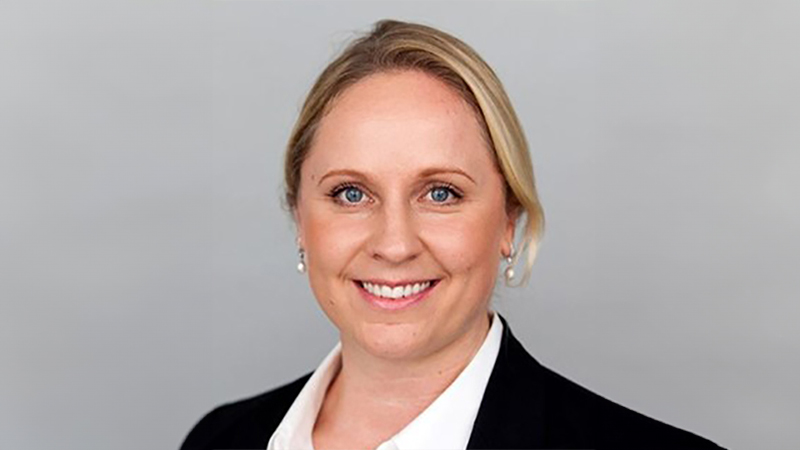The wealth manager’s view
Alena Kosava, head of investments research, AJ Bell
 The past year was devastating for portfolios with greater allocation to fixed income, with bond assets sold off on par and/or in excess of equities with historically negative stock/bond correlations breaking down.
The past year was devastating for portfolios with greater allocation to fixed income, with bond assets sold off on par and/or in excess of equities with historically negative stock/bond correlations breaking down.
As repricing took hold, we moved from the world’s negative-yielding debt pile hitting a record high of $18trn (£15.04trn) to a subsequent reversal amid global central banks administering a series of interest rate hikes. This drove bond yields higher and led to a sharp decline in the universe of global negatively yielding debt. The spike in yield saw fixed-income assets become attractive once again – doing away with ‘Tina’ (there is no alternative) and over to ‘Bob’ (bring on bonds).
While central banks have come a long way in lifting interest rates over the past year, there may be further room to go (albeit likely at a decelerating pace from here), underpinned by developments around inflation through 2023.
What became clear last year is that inflation is a very complex topic, with a number of moving parts, that is incredibly difficult to forecast (and to get right), particularly around turning points. This makes us relatively cautious on long-duration fixed-income assets at this juncture as we anticipate there may be further repricing.
While turning more positive on credit more broadly, we continue to allocate capital to government bonds, albeit on the shorter end of the curve while nudging the overall portfolio duration slightly higher.
Credit appears relatively attractive at this stage, with many credit markets suffering a dismal performance run last year as a combination of sharply higher government bond yields and wider credit spreads weighed on the asset class.
However, looking ahead, corporate balance sheets seem to be in good shape with corporate issuers having spent the past couple of years refinancing their debt. Mindful the world may be edging toward a global recession in 2023, being discerning within credit remains key.
The fund buyer’s view
Seema Shah, chief global strategist, Principal Asset Management
 When it comes to increased interest rate risk, after a particularly tough 2022, US 10-year treasury bonds now yield more than twice the estimated dividend yield of the S&P 500 Index. This presents investors with the opportunity to lock in income with a less volatile asset.
When it comes to increased interest rate risk, after a particularly tough 2022, US 10-year treasury bonds now yield more than twice the estimated dividend yield of the S&P 500 Index. This presents investors with the opportunity to lock in income with a less volatile asset.
Additionally, with yields having risen, inflation slowing and central banks closer to the end of their hiking cycle, bonds are positioned to provide risk mitigation during the coming economic slowdown. The negative correlation between stocks and bonds has reasserted itself, and the diversification benefit of fixed income has been restored.
As for offset credit risk, with the days of cheap funding and abundant liquidity firmly in the past, and the economy slow- walking into recession, riskier credit segments will likely see fairly significant spread widening during 2023.
Dialling down spread risk should be offset by increasing exposure to core fixed income, such as government bonds, investment grade, securitised debt. Not only should they have sufficient buffer to weather the storm, but they are also now offering more attractive yields than in recent years.
The analyst’s view
Emma Veitch, analyst, Liontrust Global Fixed Income
 The beginning of the 1980s was the last time short-term US treasury rates were higher than long-term rates to the extent that we are currently seeing in the inversion of the US treasury yield curve.
The beginning of the 1980s was the last time short-term US treasury rates were higher than long-term rates to the extent that we are currently seeing in the inversion of the US treasury yield curve.
When short-term rates exceed long-term rates (a yield curve ‘inversion’), this is typically regarded as a reliable signal that a recession will follow in the next 12-18 months. A brief inversion at the end of March 2022 was followed by a full-on inversion from July 2022, since when the spread between two and 10-year treasury rates has widened to almost 1%, as at the end of February. The bond market is expecting a recession.
Monetary policy infamously works with a variable lag, so the economy has still been experiencing high inflation levels, solid corporate profitability and strong employment data. The US Federal Reserve is on a path to raise rates further to combat inflation – we expect that 25 basis point rate hike increments should be viewed as the norm for the foreseeable future. The market has priced in a peak for US rates in the 5.25%-5.50% range during Q3 so is expecting rates to move higher.
In this environment, where short-term rates move higher and for longer, the economy will inevitably slow down. By the end of 2023 we anticipate the Fed will be in a position where it can start easing monetary policy. It is therefore a good time to be increasing duration.
Conversely, corporate profitability will suffer, so we have a strong preference for high-quality bond issuers and are looking to avoid more volatile cyclical credits.
The fund manager’s view
Samantha Lamb, head of fixed income, GIB Asset Management
 Investment-grade corporate bond yields peaked above 5.5% in Q4 2022. Not since 2009 have we seen corporate bond yields at such elevated levels. However, anyone invested in investment-grade corporate bonds in the 18 months to Q4 2022 had a very bruising experience. Yields repriced from a decade low of 1.4% to a 14-year high of 5.5% in a staggeringly short space of time (a 4x increase). However, such a repricing creates a much better return opportunity when looking forward.
Investment-grade corporate bond yields peaked above 5.5% in Q4 2022. Not since 2009 have we seen corporate bond yields at such elevated levels. However, anyone invested in investment-grade corporate bonds in the 18 months to Q4 2022 had a very bruising experience. Yields repriced from a decade low of 1.4% to a 14-year high of 5.5% in a staggeringly short space of time (a 4x increase). However, such a repricing creates a much better return opportunity when looking forward.
Since that peak in yield, we have seen a retracement with yields coming down, and total returns of +5% generated. Does that mean the opportunity in corporate bonds has passed? Yields may have come down from their peak but they are still above 5%. We believe the opportunity in investment-grade corporate bonds remains.
Corporate fundamentals are starting from a position of strength having benefited from strong margins, and the opportunity to term out debt over recent years. Therefore, despite economic headwinds and expected fundamental deterioration, within investment grade there is room to absorb this without causing ratings pressure.
More caution should be applied when looking at high-yield companies, which are typically more highly leveraged businesses that will struggle if interest rates remain high.
In addition, the early 2023 market confidence that the Fed has finally combatted inflation is being tested. Government bonds yields having already begun repricing, and corporate bond spreads have started to follow, so we may yet revisit better entry points.
See also: Ask the experts: How will ESG investing weather a recession?
This article first appeared in the March edition of Portfolio Adviser Magazine










